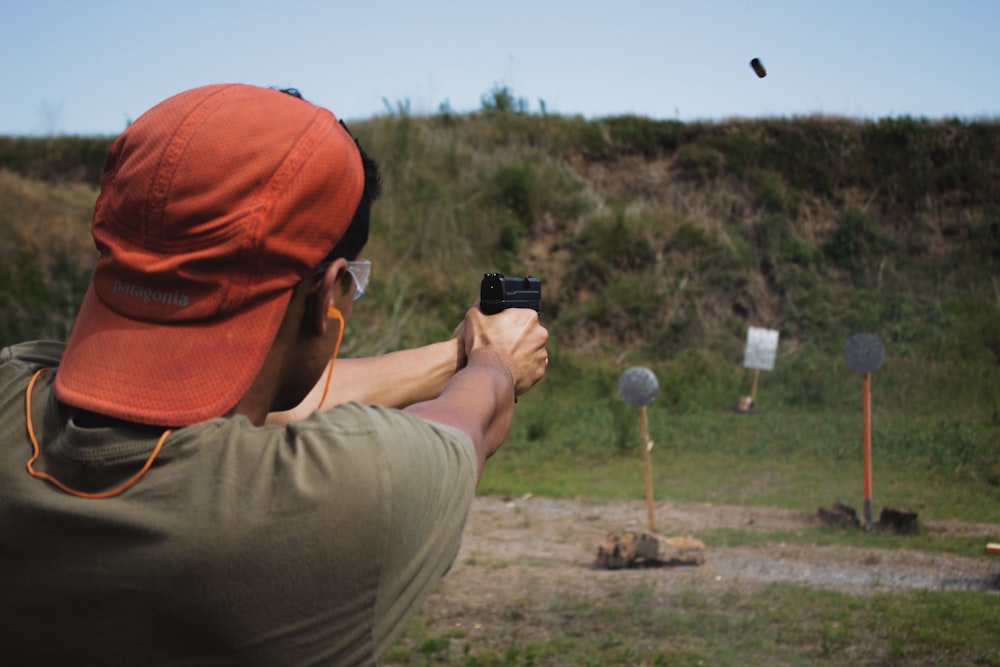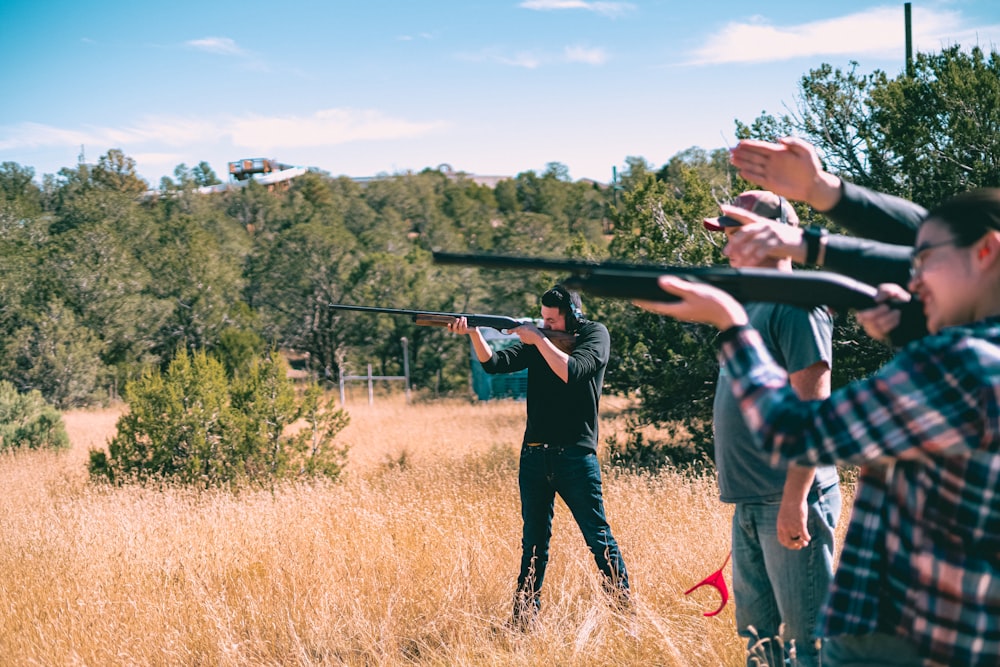The Sig Sauer is a semi-automatic pistol designed for 9mm ammunition. Although two companies initially developed the Sig Sauer for the US military, it has become popular with federal, state, and local law enforcement agencies.
Thanks to its user-friendly design, the Sig Sauer is perfect for precision, even at long ranges.
What Steps Should You Take to Shoot Accurately With A Sig Sauer?
STEP # 1
Use safety glasses and earplugs before firing the Sig Sauer. Also, set up a target on the range and make sure the range is empty and safe.
STEP # 2
Place several pieces of ammunition in a Sig Sauer. In this case, use a unique clip for your 9mm rifle. After setting up the Sig Sauer, hold it with your dominant hand and position the gun’s grip in a V formed by your index finger and thumb.
When you wrap all your fingers and thumb around the grip, your index finger should be within reach of the trigger. Remember to keep your finger away from the trigger until you’re ready to shoot.
STEP #3
To attach the clip to the Sig Saucer’s grip, push it in until it clicks. Hold the pistol in your dominant hand to load a 9mm ammunition into the firing chamber and pull the slide back with your other hand.
STEP #4
You should keep your feet about shoulder-width apart when standing. If you prefer to shoot with the dominant hand, push the right leg back until the toes of the same foot are level with the heel of the left foot. If you’re left-handed, you should adopt a right-handed posture. Bend your hips to form a 45-degree angle between your body and the desired target.
STEP #5
Before taking a shot, ensure that the non-dominant hand’s palm covers the base of the Sig Sauer and the side of your strong hand while holding the weapon.
Also, support yourself by wrapping the thumb and fingers of your non-dominant hand around your dominant hand. A firm grip is achieved by squeezing the gun’s handle until your hand trembles and then loosening the grip slightly.
STEP #6
Raise the muzzle of the Sig so that the target appears above the front sight and in the notch on the rear. Move the pistol to a position where the target is in the center of the notch in the rear sight. Adjust the muzzle height, so the target rests mainly on the front blade sight.
STEP #7
Finally, prepare yourself by taking a deep breath and moving your index finger to the trigger. You can fire the Sig Sauer by rolling your index finger over the trigger. Try not to pull or jerk the trigger hastily.
Basics of Accurate Shooting with Sig Sauer
Shooting Stance
Some may not know that posture has an impact on the accuracy of your shots. Therefore, you should consider your shooting posture as the critical aspect of accuracy. A solid, comfortable stance leaning forward will control the gun’s recoil. Don’t feel bad about leaning forward; everyone starts somewhere.
There are three shooting stances: Modified Weaver, Modified Weaver, and Isosceles. Therefore, choosing a particular option depends on how technical you want to get.
The only real difference between the two basic shooting stances is that you change the position of your feet and bent arm. Just make sure you lean forward slightly. In general, do whatever you feel most comfortable with and are willing to do for an easy shot.
Handgun Grip
The way you hold the Sig Sauer also has a significant influence on your shooting accuracy. Gun experts recommend a firm grip, but not so firm that it causes tremors. You should keep non-trigger fingers from moving while holding the pistol.
Overall, the trigger finger and thumb should leave the webbed fingers and sit high on the grip. This inhibits the back-and-forth movement of the slide. With a low grip, the pistol may tip over more often. With a high grip, you have to force your hand or web into the rear strap.
Also, your forearm should be in line with the gun so that it can absorb as much recoil as possible when the metal part moves back and forth.
Aiming/Aiming
Most people squint their eyes tightly and concentrate with only one eye open to see the target. Remember, however, that you must line up the front sight’s top edge with the rear sight’s top edge. In this case, your shots should land between the tip and center of the front post, not on the front point itself.
Depending on how long you have been shooting with one eye, this can be a big challenge at first. Once you get the hang of it, you’ll find that you shoot much faster, with less strain on your eyes.
Pulling The Trigger
When you pull the trigger, pull it so slowly that you’re almost shaken when the shot goes off. Don’t pull the trigger immediately because you’d feel jerked when the shot is fired. Also, the slower you pull, the more accurate the shot.
Where exactly do you want to place your trigger finger? That depends on your taste and – perhaps even more important – on your finger length. You can use any point of the finger length before the first joint.
Remember that a perfect trigger should go straight back, with only the first joint of the trigger finger bending. Examine your weapon and your fingers to find the best fit.
Taking a Deep Breath to Feel relaxed
When firing a shot with the Sig Sauer, it’s essential to take a deep breath and try to calm your mind. However, try to breathe normally, as holding your breath for too long can lead to dizziness.
Resetting the trigger
A common mistake many people make after a shot is immediately taking their finger off the trigger and focusing on the outcome. If you quickly take your finger off the trigger, you jolt the trigger and introduce unnecessary movement into the gun. You also make it harder to shoot next time because you must pull the trigger’s first part again.
Conclusion
Realizing you cannot hold your hand steady when firing a pistol is the first step to improving your accuracy. Even pulling the trigger, keep the sight level and let the pistol wobble. Reducing the size of the wobble cone and holding your aim takes practice.
If you pull the trigger of a pistol whose sights are properly aligned with the target, the bullet will fly in the intended direction only if you don’t hesitate to pull the trigger with extreme precision. Experts advise aspiring shooters to improve their handgun skills at home without firing a real gun.









